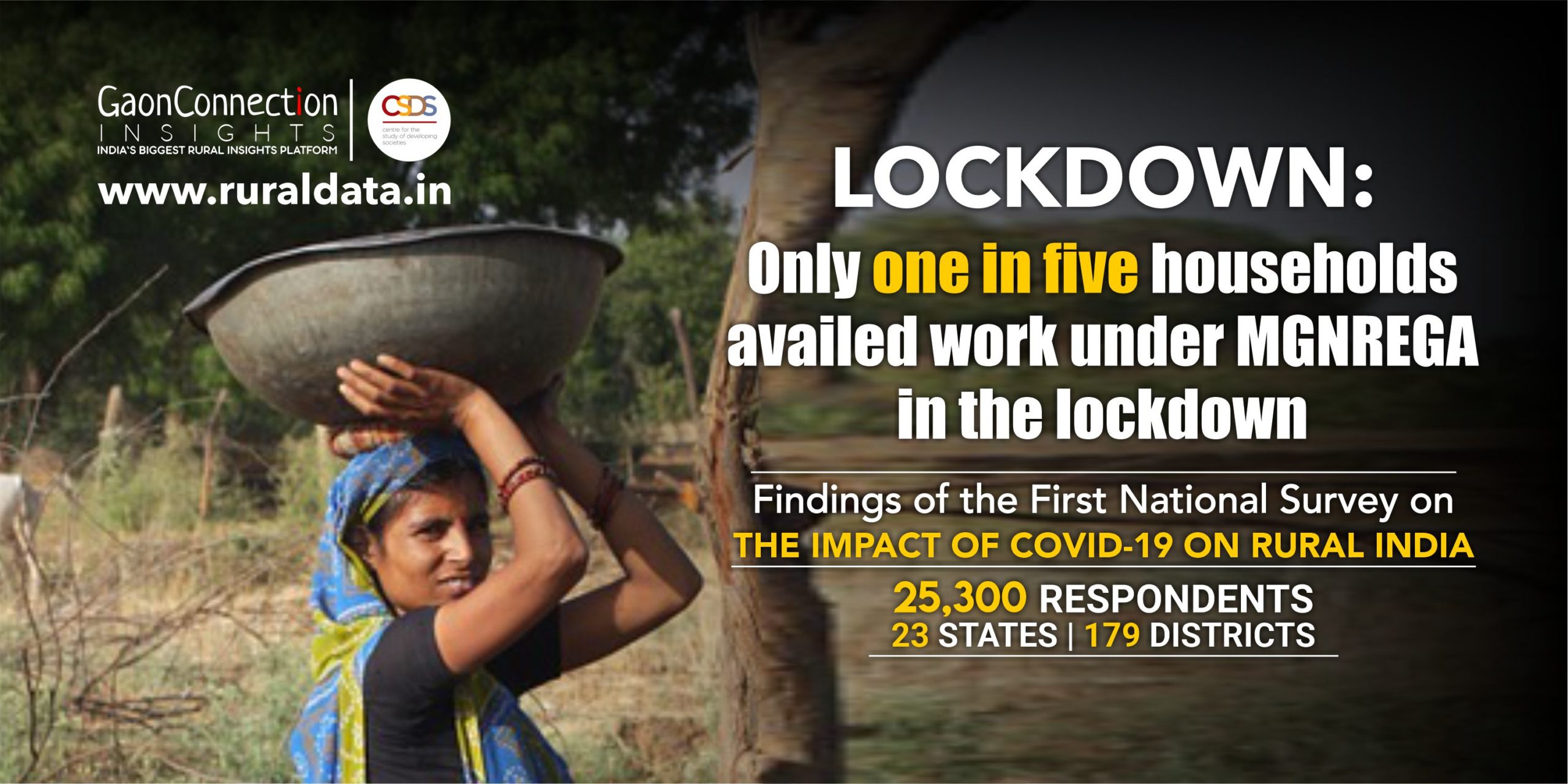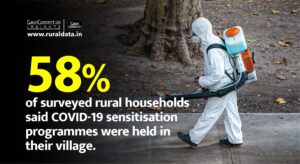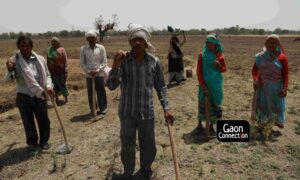Raja Babu, a labourer, returned to Beko village of Bagodar block in Giridih, Jharkhand from Mumbai, during the nationwide lockdown due to the COVID19 pandemic. He has been unemployed since he got back nearly four months ago.
“I had hoped to find some work under MGNREGA in my village. It has been four months and there has been no MGNREGA work in our panchayat. How many more days will I have to sit idle like this?” Babu wondered.
Like Babu, 400 other migrant workers have returned in his gram panchayat and all are still waiting for some work.
A nationwide survey by Gaon Connection, India’s largest rural media platform, found that a whopping 80 per cent of villagers did not find any work under MGNREGA during the lockdown, while only 20 per cent found employment under the scheme.
However, more than 50 per cent of the villagers in Chhattisgarh, Uttarakhand and Rajasthan said they or a member from their family had found work under MGNREGA during the lockdown.
MGNREGA or Mahatma Gandhi National Rural Employment Guarantee Act provides for 100 days a year of employment to people in rural areas. In April, the Centre had widened the scope of MGNREGA to provide employment to maximum people. However, there has been no work under MGNREGA in many places.
To understand the hardships of rural India during the lockdown, Gaon Connection conducted a first-of-its-kind national rural survey based on face-to-face detailed interviews with 25,300 respondents, in 179 districts across 20 states and three union territories. The survey, showcasing the invisible casualties of the COVID-19 lockdown, was carried out by Gaon Connection Insights, Gaon Connection’s data and insights arm, and was designed and data analysed by New Delhi-based Centre for Study of Developing Societies (Lokniti-CSDS).
The figures that have surfaced in this rural survey of Gaon Connection uncover the truth of the rural employment under MGNREGS.
Data from Mission Saksham by Jharkhand’s Rural Development Department showed that most of those who went back to their villages did not have job cards, needed to work under MGNREGA. An interaction with more than three lakh migrant labourers in the state or 75.04 per cent revealed that more than 2.26 lakh people were keen to work under MGNREGA but 52.71 per cent of them, or more than 1.59 lakh people, did not have job cards, according to the data.
The state wise data of the Gaon Connection survey showed that 13 per cent villagers in Bihar, 9 per cent in Jharkhand, 14 per cent in Odisha and 24 per cent in West Bengal were able to find work under MGNREGA during the lockdown. Only eight per cent villagers in Maharashtra and two per cent in Gujarat got work under MGNREGA.
In North India, 7 per cent villagers in Himachal Pradesh, four per cent in Jammu and Kashmir, 25 per cent in Haryana, 7 per cent in Punjab, 14 per cent in Uttar Pradesh and 19 per cent in Madhya Pradesh were employed under MGNREGA.
More than 35 lakh migrant labourers returned to their villages during the lockdown in Uttar Pradesh. “We all looked for work under MGNREGA, the government had given the assurance that work will provided under the scheme, but the truth is there is no employment anywhere,” Arendra Singh Bhadoria, a villager from Sahampur village of Block Katra in Shahjahanpur district of Uttar Pradesh, told Gaon Connection.
Ajay Sahani, from Asaman village of Raghopur Narsanda gram panchayat in Vaishali district of Bihar, said the village had undertaken MGNREGA work during the lockdown for six days but only five or six labourers could be engaged in some canal work. The others could find no work. Those who worked at the canal were yet to receive their wages, he claimed.
The Gaon Connection survey revealed that 59 per cent of the respondents in Rajasthan had been given work, i.e., more than half of the people seeking employment under MGNREGS got work. Similarly, 70 per cent villagers in Chhattisgarh and 65 per cent in Uttarakhand could find work under MGNREGA during the lockdown, the survey said.
Asha Devi, a resident of Kalaliya village at Raipur tehsil in Pali district of Rajasthan said both she and her husband got work under the scheme after they returned to their village during the lockdown.
“We have completed 30 days of work and want the government to give us at least 200 days of employment in a year,” Devi said. MGNREGA work was on at three different sites in her panchayat employing in total nearly 200 workers, she added.
The Gaon Connection survey revealed that the demarcation of areas into red, orange and green zones based upon the contagion, also affected the rural employment under MGNREGA.
Twenty four per cent got employment under MGNREGS in the green zone districts during the lockdown while 19 per cent in orange zone districts and only 13 per cent in red zone districts got work under the scheme.
“During the lockdown, our village undertook only 25 days of MGNREGA work in which I too got 15 days of employment. Returnees who had job cards got work,” Nagappa Sagamkunta from Mamuretti village of Kotkunde post in Raichur district in Karnataka told Gaon Connection.
Sagamkunta, like Asha Devi, felt the government should provide work for 200 days under MGNERGA and also increase the wages.
Even though there has been record employment provided under MGNERGA during the lockdown in thecountry, a large number of villagers could not get a single day of work under the scheme.
“One may get some odd job for a day or two, but even that is not for everyone, only a few get jobs and even then there is no guarantee of timely wages,” Bhadoria from Sahampur village lamented.



















